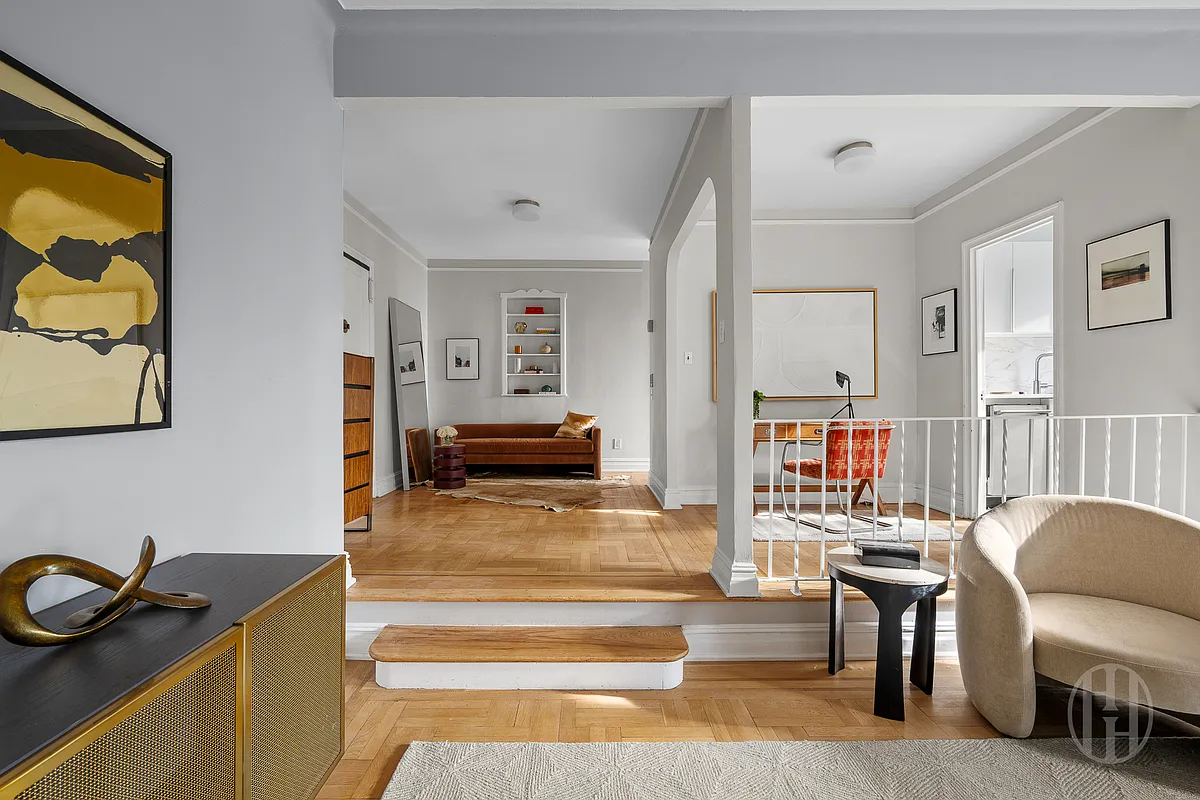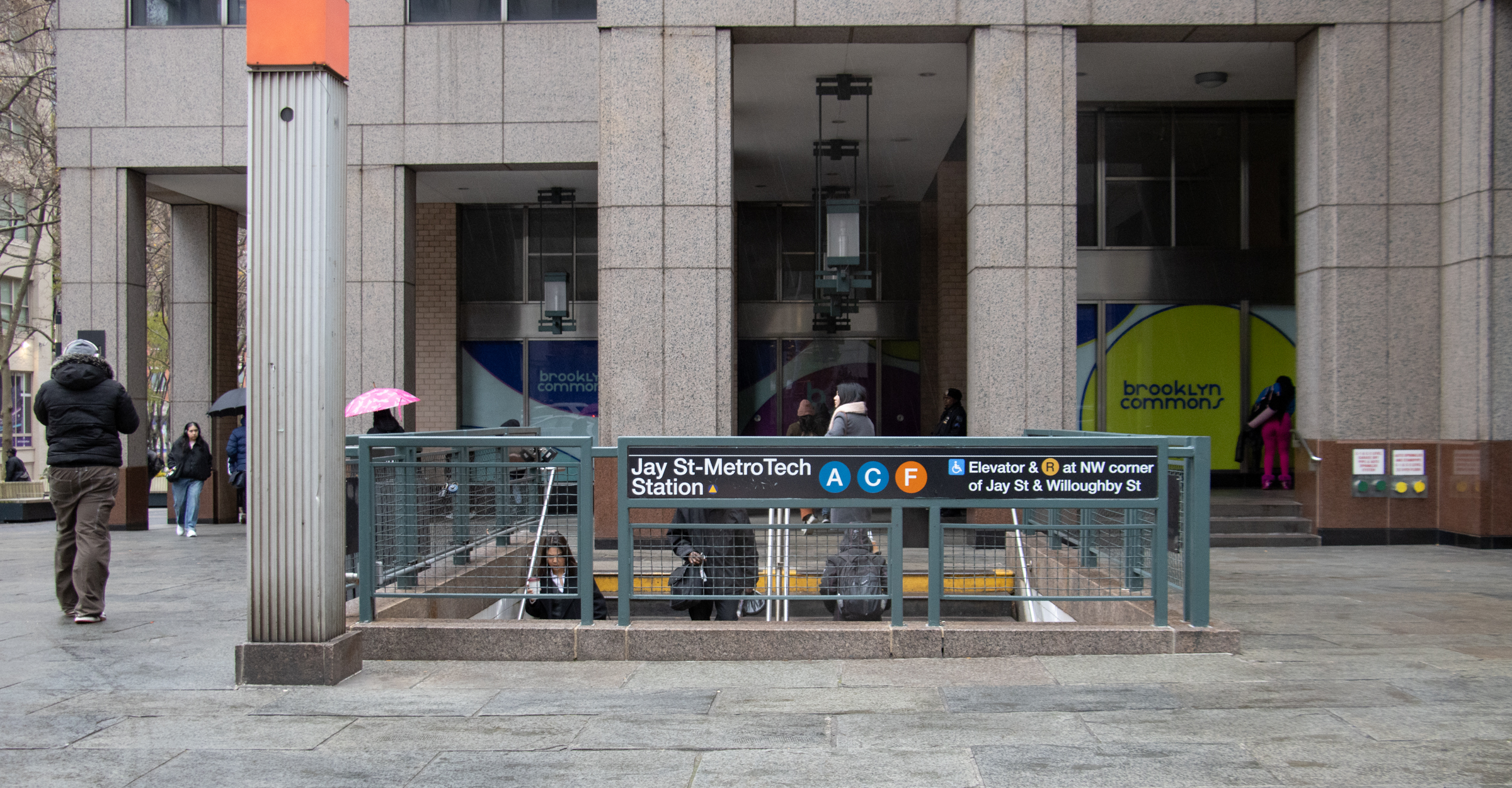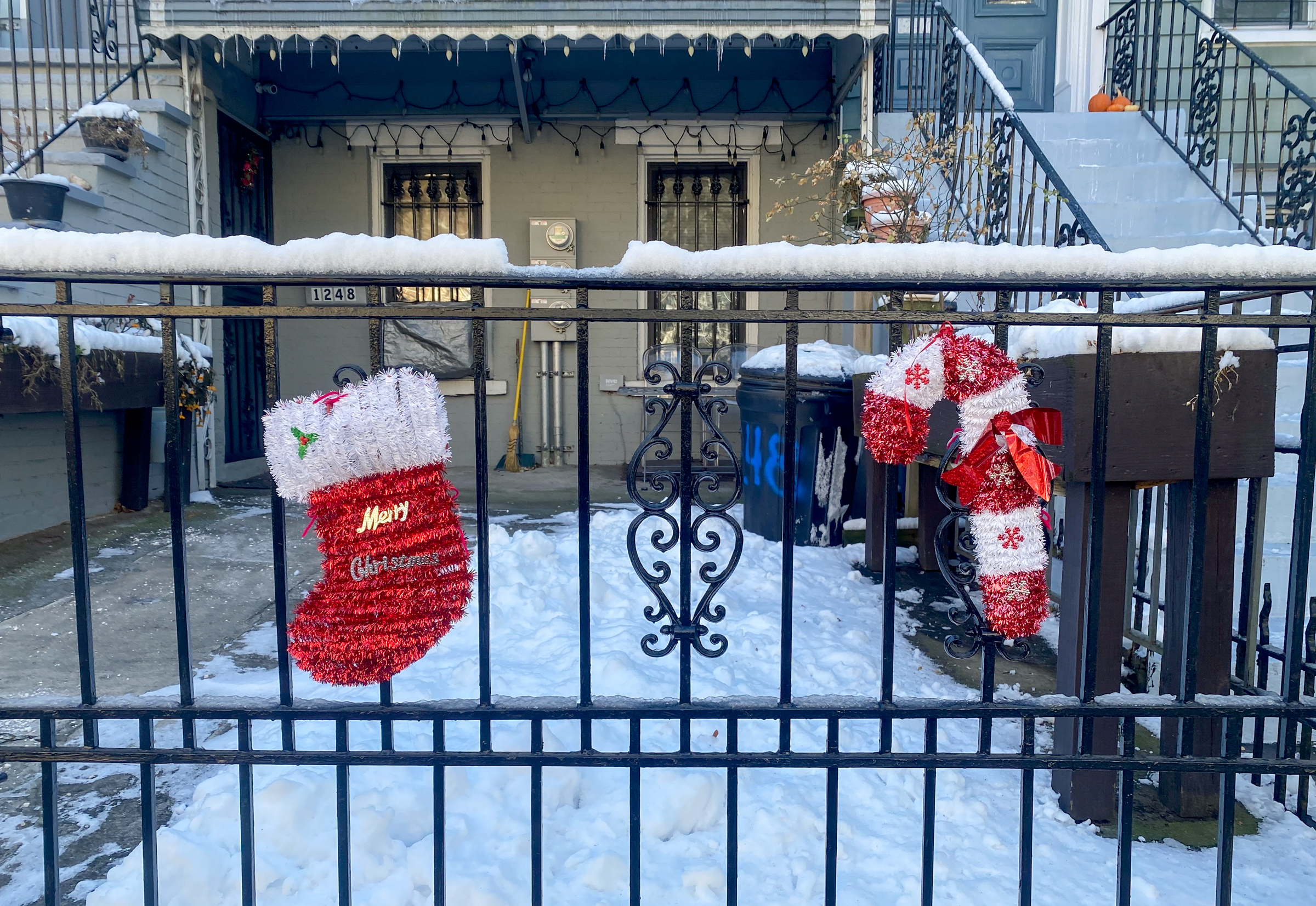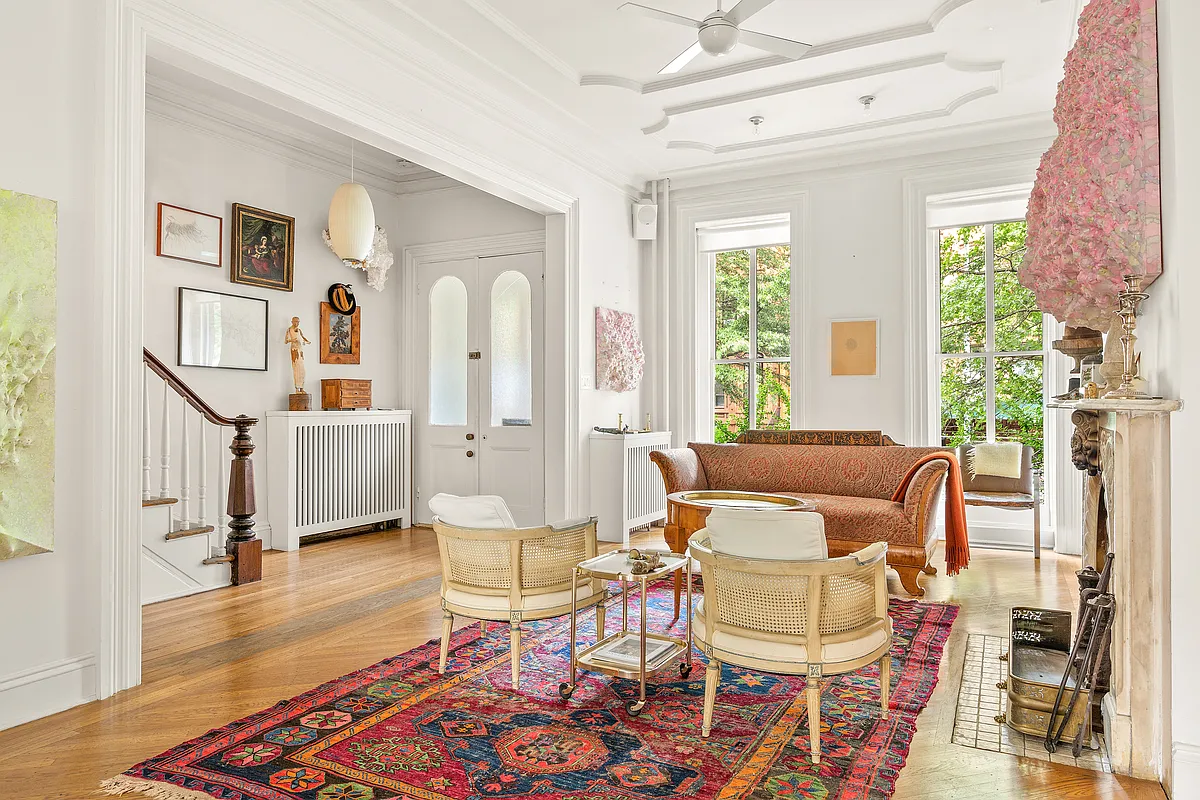Walkabout with Montrose: Tenement Living
This is the second in a series of pieces about the development of multiple-unit housing in Brooklyn. Starting at the bottom of the economic ladder and moving up tenements. There have been tenement buildings in NY since the beginning of the city. The poor and lower working classes have long been sheltered, if you could…


This is the second in a series of pieces about the development of multiple-unit housing in Brooklyn. Starting at the bottom of the economic ladder and moving up tenements.
There have been tenement buildings in NY since the beginning of the city. The poor and lower working classes have long been sheltered, if you could call it that, in cramped and wretched rooms by the docks, slaughterhouses, and factories, and in areas allowed to go to seed by unscrupulous landlords and city officials.
With immigration rising, beginning in the mid 19th century, the population of the Manhattan and Brooklyn continued to grow by leaps and bounds. In 1867, the first of three Tenement House Laws was passed in an attempt to improve conditions, which almost everyone agreed were horrible and inhumane.

Legally, a tenement was defined as any building with 3 or more units, with shared sanitary facilities. This 1867 law only required that a legal tenement had a fire escape and at least one privy for every 20 tenants. This privy was outside, in the back of the building, and the law also forbade the keeping of sheep, goats, horses and cows on the premises.
Most of these tenement buildings had 2 or 3 room units, and had received little light or air. Many of them were 3 and 4 story wooden buildings which deteriorated quickly, and were prone to catch fire. Real reform was still to come.
In 1879, an important new tenement house law was passed, which is referred to as the Old Law. It mandated that new tenement buildings be built to allow natural light and air in every room. The “dumbbell” apartment was invented, with wider rooms in the front and back and narrow centers to allow air shafts to be built in the center to let in necessary light and ventilation.
The lowest income adjoining tenements shared a single rear yard privy, and water was only available in the rear yard. Higher end tenements typically had 4 units per floor, with indoor toilets in the center of each floor, along with the stairwell.
Most higher end units had three rooms, with a living room in the front or rear, and bedrooms open to the air shafts, each successive room being reached by passing through another room. The living room contained a tub and cold water, and a chimney or flue for a coal stove for heating and cooking.

Many of these buildings had four residential floors rising above retail stores on the ground floor, and were often on mixed commercial blocks. Corner buildings, with two street frontages were exempt from the dumbbell configuration, and were often larger than midblock tenements.
By this time, the preferred building materials were brick and stone, not wood, but in spite of the changes, tenements were still crowded and miserable places to live. In 1929, the Multiple Dwelling Law mandated that all tenements be upgraded to replace outdoor privies with one indoor water closet for every two families, and fire safety standards, such as sprinklers and better fire escapes were implemented.
In Brooklyn, we can still find the remnants of the Old Law tenements in the oldest neighborhoods like Brooklyn Heights, Cobble Hill, Williamsburg, Bushwick, and parts of Bed Stuy.

Many of us may have been in one of these apartments that still has the tub in the living room, tiny kitchen against a wall, and a toilet that seem like an afterthought tucked into a closet. It was. Ironically, many of these buildings do not look like our idea of tenements from the outside.
The Victorians believed in exterior ornament, whether on a factory, tenement or private house. These buildings can have expressive cornices, framed windows with ledges and pediments, and fine entry doors. Most are brick, all are walk-ups, and they range in styles from early Neo-Grec, to Romanesque and Renaissance Revival.
The best, and most judiciously thought out tenements are the workers’ housing built by Alfred Tredway White, designed by Wm Field and Son, from 1876 1890. The Tower Building, Home Buildings, and Workingman’s Cottages are found on Warren, Baltic and Columbia Place, in Cobble Hill, while his Riverside Apartments, by the same architects, are in Bklyn Hts, on Columbia Place and Joralemon, part of which was lopped off in the building of the BQE.

All of White’s tenement buildings share the same basic design, are quite beautiful, and allow light and air in through windows and air shafts. The balconies and exterior hallways prevent the foul enclosed hallways of other tenements, as well providing architectural interest.
Storefronts line the street level on Columbia Place. He also provided a large courtyard in each development with a fountain, play area for children, and concert space. In spite of this, the apartments are still extremely small, especially for families.
They also had indoor toilets in each unit, although, originally, common bathing facilities were located in the basements, and were available for an extra fee.

A similar effort in decent worker’s housing was built by Brooklyn’s richest man, Charles Pratt, in 1885-86. The Astral Apartments, for Pratt’s Astral Oil Company workers, span a complete block of Franklin, Java and India Streets in Greenpoint.
They were designed by Lamb and Rich, who also designed most of Pratt Institute. 95 families originally lived here, and because Pratt was not trying to make a profit, he added some amenities White did not.
Each apartment had a toilet and a bathtub with hot and cold running water, and a dumbwaiter to the cellar was provided for trash removal. Like the White buildings, the Astral was well ventilated, and also had stores on the ground floor, and a large courtyard in the rear.

In spite of these two philanthropic projects, the majority of the tenements in Brooklyn were still beyond awful. During the Depression, the WPA tore down many of the deteriorating wood frame tenements. Very few remain today, and beginning in the 1950’s, modern housing projects removed many more tenement blocks.
My Flickr page has some historic photographs of the buildings and those who lived in them, as well photos of some of these buildings today.
Since tenements were designed to house the workers who made the city run – the day laborers, servants, clerks and factory workers, coachmen, carpenters and dressmakers, they are often found on streets now highly desirable for the restaurants, stores and establishments that are now found on many of their commercial ground floors. Many former tenement buildings have now been reconfigured as desirable coops, condos and rentals.
Next in the series: Most late 19th century middle class apartments are not classified as tenements; they are flats, French flats to be exact. So what’s the difference?





my apt was rent controlled too. the woman i subletted from had my apartment and the apt next door with a broke thru entry to connect both apartments. she paid about 350 and 450 for each apartment. mine was the 350 one. she charged me 750 then lowered it to 725 when i started doing work for her husband. the apartment next door she charged over 1000 dollars for.
when the building was sold private detectives started coming around pretending there were break ins and asking people there if they saw anyone, and asking if they lived in the apartments and for how long, etc. turns out it was the management company that set us all up in a sting operation. i totally blabbed, stupidly, and was forced to move out in a matter of a week. i guess i could have stayed but i didnt want to make waves. i had to repaint the apartment (that was neon pink that i painted) back to white and have all my stuff out ASAP so she could move back in and pretend she lived there the whole time. i was officially homeless with a dog and zero dollars in savings. i am pretty sure she got bought out. most people in the building were evicted pretty damn fast. there were a few hold outs though. i havent been back there in a while. our super was a creepy old alcoholic who lived in the cellar, but he was cool as hell and everyone in the neighborhood loved him. when a sushi restaurant opened up next door in the building they said he wasnt allowed to sit outside the building anymore 🙁
i loved that building, i like tenement buildings’ setup. ludlow street was bad tho when it started turning into mardi gras every weekend though.
*rob*
Benson that’s so unbelievable;e I can’t even grasp the enormity of it. I’m sure your grandmother is a remarkable woman.
when my son grows up, I’ll tell him Dad really upgraded you – you have your own bathroom vs. Dad had to share a tiny tub in kitchen with rest of the family so before you complain about “small” issues, realize how good you have it
I lived a block away from the Astral Apartments in Greenpoint in the summer of 2000. The interior bathroom had a tub and toilet, but no sink.
THL is correct. The bathtub was put in the kitchen for two reasons: low-cost simplicity of plumbing (one vertical stack) and the ability to heat the water.
My immigrant grandfather struck it rich for a while when he came to the US by establishing a business to “upgrade” tenements. He would buy buildings (mostly in Sunset Park and Red Hook) that had no steam heat nor hot water, upgrade them to install such systems, and then sell them. He was a “flipper” of tenements.
Alas, his fortune turned for two reasons: he was the victim of a Ponzi scheme (remember that the original Ponzi preyed on Italian immigrants) and real estate crashed in the Depression. My grandfather was a broken man and skipped out on his family, leaving my grandmother to take care of 9 kids in the middle of the Depression.
The bathtub in my in-laws set up is very tall and right next to the sink. There is a cover that fits over the tub that essentially serves as the kitchen counter. Need to take a bath? lift the cover.
The kitchen was the only warm room because of the stove and all the plumbing runs down one side of the building.
Posted by: TownhouseLady at August 4, 2009 10:56 AM
Same in my current home!!!
Thanks, MM. Of all your posts, I’ve enjoyed this one most because it’s so close to home for me. I’ve lived in apartments like this in my early 20’s, as did my parents and my grandparents when they came to this country and landed on the LES.
Everyone really needs to check out the Tenement Museum if you haven’t already done so!
The kitchen was the only warm room because of the stove and all the plumbing runs down one side of the building.